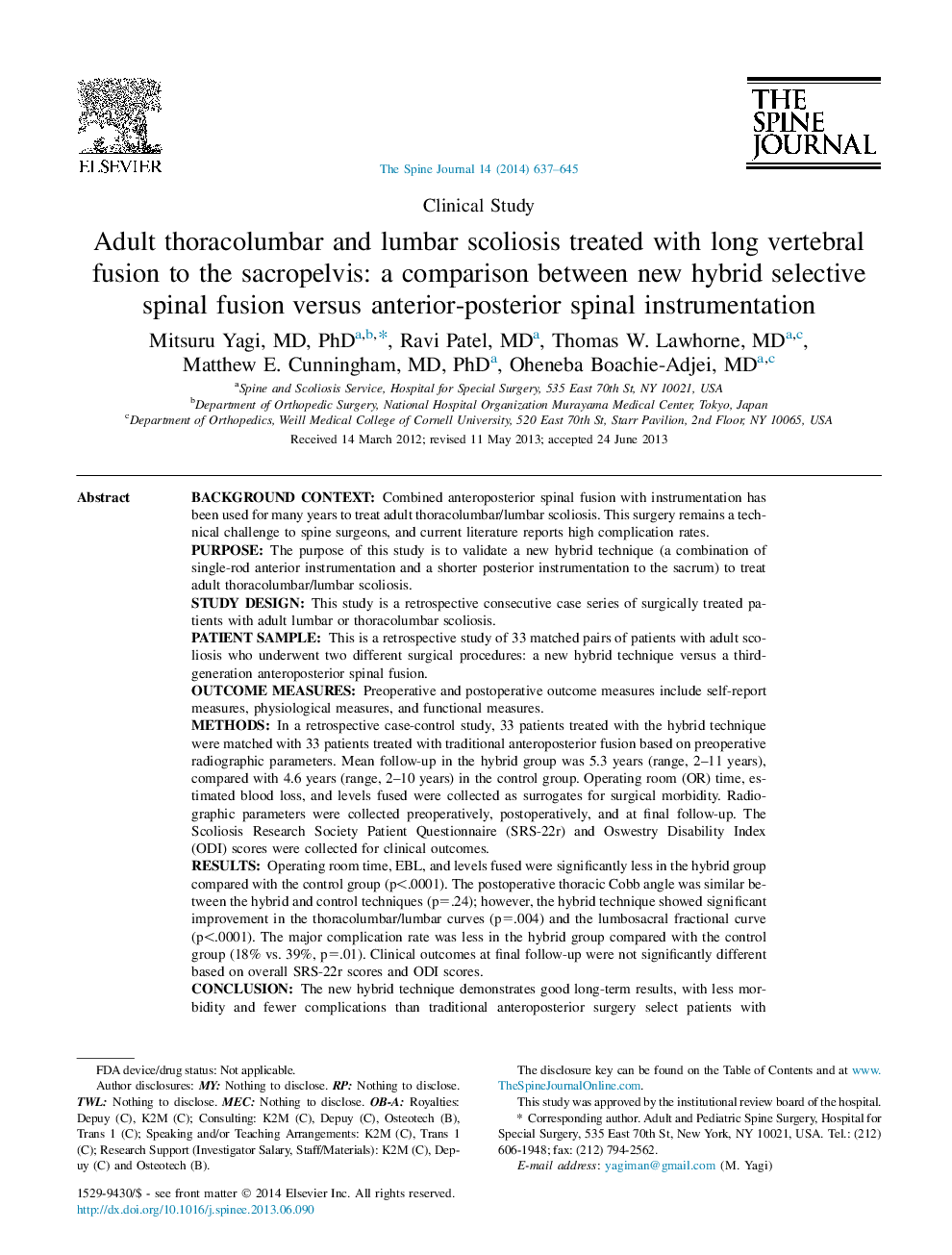| کد مقاله | کد نشریه | سال انتشار | مقاله انگلیسی | نسخه تمام متن |
|---|---|---|---|---|
| 4097021 | 1268578 | 2014 | 9 صفحه PDF | دانلود رایگان |
Background contextCombined anteroposterior spinal fusion with instrumentation has been used for many years to treat adult thoracolumbar/lumbar scoliosis. This surgery remains a technical challenge to spine surgeons, and current literature reports high complication rates.PurposeThe purpose of this study is to validate a new hybrid technique (a combination of single-rod anterior instrumentation and a shorter posterior instrumentation to the sacrum) to treat adult thoracolumbar/lumbar scoliosis.Study designThis study is a retrospective consecutive case series of surgically treated patients with adult lumbar or thoracolumbar scoliosis.Patient sampleThis is a retrospective study of 33 matched pairs of patients with adult scoliosis who underwent two different surgical procedures: a new hybrid technique versus a third-generation anteroposterior spinal fusion.Outcome measuresPreoperative and postoperative outcome measures include self-report measures, physiological measures, and functional measures.MethodsIn a retrospective case-control study, 33 patients treated with the hybrid technique were matched with 33 patients treated with traditional anteroposterior fusion based on preoperative radiographic parameters. Mean follow-up in the hybrid group was 5.3 years (range, 2–11 years), compared with 4.6 years (range, 2–10 years) in the control group. Operating room (OR) time, estimated blood loss, and levels fused were collected as surrogates for surgical morbidity. Radiographic parameters were collected preoperatively, postoperatively, and at final follow-up. The Scoliosis Research Society Patient Questionnaire (SRS-22r) and Oswestry Disability Index (ODI) scores were collected for clinical outcomes.ResultsOperating room time, EBL, and levels fused were significantly less in the hybrid group compared with the control group (p<.0001). The postoperative thoracic Cobb angle was similar between the hybrid and control techniques (p=.24); however, the hybrid technique showed significant improvement in the thoracolumbar/lumbar curves (p=.004) and the lumbosacral fractional curve (p<.0001). The major complication rate was less in the hybrid group compared with the control group (18% vs. 39%, p=.01). Clinical outcomes at final follow-up were not significantly different based on overall SRS-22r scores and ODI scores.ConclusionThe new hybrid technique demonstrates good long-term results, with less morbidity and fewer complications than traditional anteroposterior surgery select patients with thoracolumbar/lumbar scoliosis. This study received no funding. No potential conflict of interest-associated bias existed.
Journal: The Spine Journal - Volume 14, Issue 4, 1 April 2014, Pages 637–645
